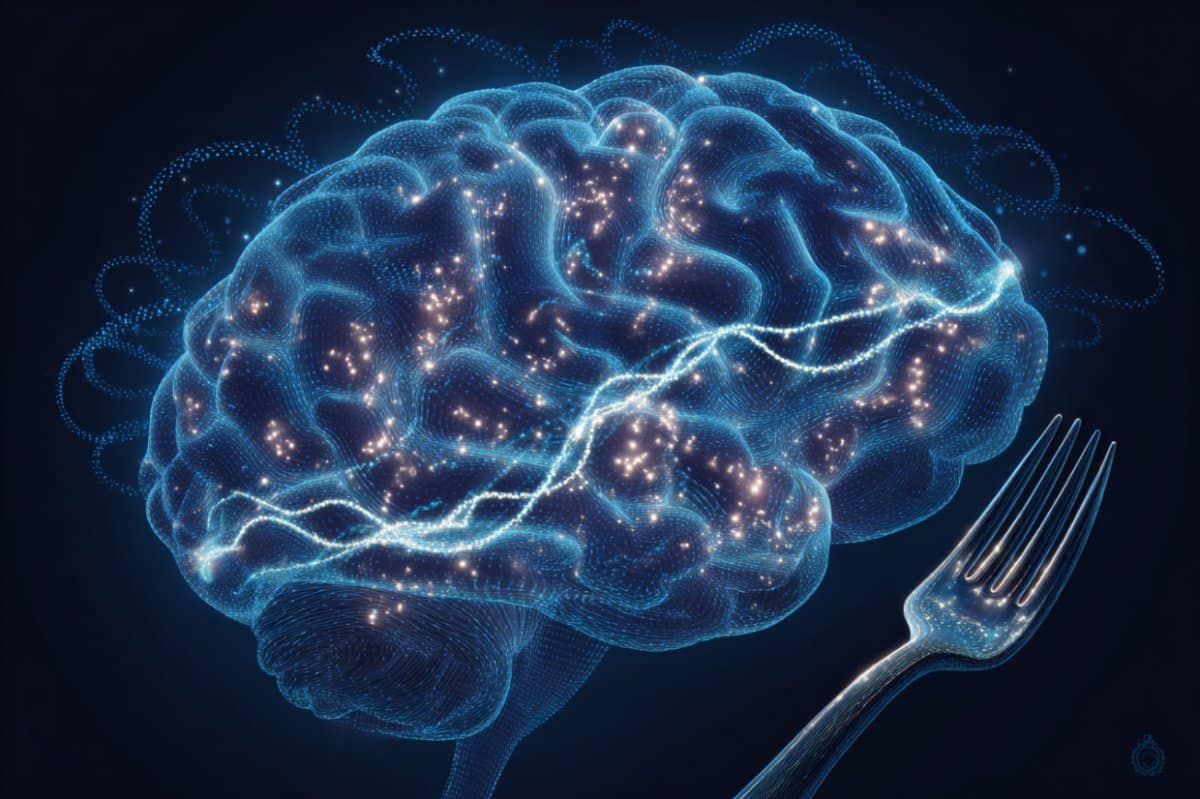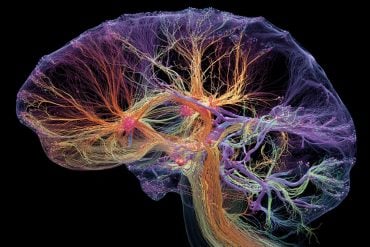Summary: New research shows that the brain’s slow oscillations and sleep spindles — key rhythms that consolidate memories during sleep — can be shaped by more than just age. While these rhythms have long been thought of as stable traits, studies reveal that metabolic state, like fasting before sleep, can enhance their timing and co-occurrence.
Fasting in rats boosted the density and synchronization of these sleep rhythms, aligning them for better memory consolidation. These findings suggest sleep’s memory-supporting architecture is more flexible — and modifiable — than previously believed.
Key Facts:
- SO-Spindle Coupling: Slow oscillations and sleep spindles work in precise timing to stabilize memories during NREM sleep.
- Metabolic Influence: Fasting before sleep increased SO and spindle density and improved their coupling in rats.
- Trait and State: While sleep rhythms have stable baseline patterns, they can adapt to metabolic and experiential states.
Source: Neuroscience News
For decades, scientists have marveled at sleep’s mysterious power to strengthen our memories. The human brain, it seems, does some of its most important work while we’re unconscious: replaying, refining, and reinforcing the day’s experiences so they can be stored for the long term.
A key part of this process involves two distinct patterns of brain activity unique to non-REM (NREM) sleep: slow oscillations (SOs) and sleep spindles.

These electrical rhythms—large, slow waves paired with rapid, waxing-and-waning bursts—are thought to synchronize widespread brain regions and promote synaptic plasticity, the foundation of learning and memory.
Over the past few years, research has zeroed in on a crucial detail: it’s not just the presence of SOs and spindles that matters, but the precise way they are timed together. This SO-spindle coupling, researchers argue, may be one of sleep’s most essential mechanisms for consolidating memories.
But is this coupling a fixed feature of an individual’s sleep, like a fingerprint? Or is it flexible—capable of adjusting to recent experiences, such as what you’ve learned that day or even what you’ve eaten? A growing body of work is beginning to suggest the answer is more nuanced than we thought.
The Rhythm of Memory
During NREM sleep, your brain cycles through patterns of silence and activity at about one cycle per second. These are the slow oscillations, sweeping waves of hyperpolarization (down states) and depolarization (up states) in the cortex.
In parallel, the thalamus generates spindles, brief bursts of higher-frequency activity in the 11–16 Hz range. When spindles are precisely timed to the upstate of a slow oscillation, the conditions are ideal for strengthening synaptic connections—a process believed to stabilize memory traces.
Earlier studies have shown that this SO-spindle coupling declines with age and is associated with both memory decline and cognitive impairment. But what about day-to-day variability? Could an unusually rich day of learning, for example, “tune” your brain to couple SOs and spindles more tightly as you sleep?
Testing the Trait vs. State Debate
To tackle this question, a research team studied 41 young adults over two nights: one after a word-pair learning task and one control night with no learning. Some participants learned a modest list of 40 word pairs, while others memorized 120, and one group had to meet a minimum recall standard. The researchers measured SO-spindle coupling across these conditions.
Interestingly, they found no consistent differences in coupling strength between the learning and control nights—suggesting that pre-sleep learning alone may not significantly influence this aspect of sleep architecture.
However, within the group that reached a performance criterion, there was a correlation between memory performance and the phase of SO-spindle coupling. This finding hints that while coupling may not change dramatically night-to-night, subtle aspects of its timing may still matter.
The study also uncovered a robust link between the amount of spindle power and the preferred phase of SO-spindle coupling—echoing previous findings that this relationship varies with age.
Taken together, the results support the idea that SO-spindle coupling may have both trait-like stability (reflecting an individual’s typical sleep structure) and state-dependent fine-tuning influenced by experience.
Beyond Learning: How Metabolism Shapes Sleep Rhythms
If not only learning, what else could shape SO-spindle coupling? One intriguing possibility is metabolic state. Recent work found that individuals with lower fasting glucose levels had stronger and more precise SO-spindle coupling.
This association persisted after controlling for many demographic and health factors, though it disappeared when diabetes status was accounted for—pointing to a complex link between glucose metabolism and sleep oscillations.
Animal experiments provide even more direct evidence. In a study of adult rats, researchers manipulated metabolic state by fasting the animals for six hours before sleep or injecting them with glucose.
Fasting increased the density of both SOs and spindles, improved their co-occurrence, and shifted spindle timing closer to the upstate of the slow oscillation—an alignment thought to optimize memory consolidation.
Glucose injections, meanwhile, increased spindle density but didn’t affect SOs or their coupling. Importantly, these changes occurred without altering the overall amounts of NREM or REM sleep.
These results suggest that while age and baseline physiology set the stage, day-to-day factors like nutrition can modulate the fine structure of sleep rhythms, potentially enhancing the brain’s ability to consolidate memories overnight.
The Neurochemistry of Sleep Substates
Even more tantalizing is emerging evidence that NREM sleep itself isn’t uniform, but fluctuates through subtle substates over minutes at a time. These substates, identified in rodent studies, are defined by varying levels of neuromodulators like serotonin, acetylcholine, and norepinephrine—all of which are known to influence memory.
How these slow neurochemical waves interact with the precise timing of SOs and spindles is still largely unknown, but understanding it could unlock deeper insights into how sleep supports memory and learning.
The Bigger Picture
These findings reinforce the idea that SO-spindle coupling is a dynamic interplay between stable individual characteristics and flexible state-dependent factors. While your personal sleep architecture likely provides a consistent baseline, it can still adapt—at least subtly—to what you’ve learned, what you’ve eaten, and possibly other yet-unknown variables.
For those looking to optimize their sleep for better memory, this research offers some practical lessons: maintaining healthy metabolic habits may support more effective sleep-based memory consolidation. And it underscores the importance of high-quality sleep itself—not just quantity, but the integrity of its underlying rhythms.
Future research is now needed to uncover the exact circuit-level mechanisms and to explore whether interventions like diet, neuromodulation, or targeted memory reactivation could enhance SO-spindle coupling in meaningful ways.
Final Thoughts
Sleep is far from passive. It’s a highly orchestrated process that relies on the exquisite timing of electrical and chemical signals to reinforce what we’ve learned and prepare us for the next day.
By continuing to unravel how slow oscillations and spindles work together—and how they can be tuned by our daily experiences—scientists are bringing us closer to understanding how to make the most of our sleeping hours for our waking minds.
Funding: This work was supported by Gemeinnützige Hertie-Stiftung, Network for Excellence in Clinical Neuroscience.
About this sleep and memory research news
Author: Neuroscience News Communications
Source: Neuroscience News
Contact: Neuroscience News Communications – Neuroscience News
Image: The image is credited to Neuroscience News
Original Research: Open access.
“Phase-Amplitude Coupling in Sleep EEG—Stable Trait or Shaped by Experience? ” by Niels Niethard. European Journal of Neuroscience
Abstract
Phase-Amplitude Coupling in Sleep EEG—Stable Trait or Shaped by Experience?
The consolidation of newly encoded memories into long-term storage critically depends on plasticity processes during sleep.
It is assumed that memory representations are facilitated by repeated reactivation of neuronal firing patterns during sleep, which promotes synaptic plasticity and thereby strengthens memory traces.
A growing body of evidence shows that such memory reactivations occur during specific oscillatory patterns in the EEG that are unique to sleep (Brodt et al. 2023).






